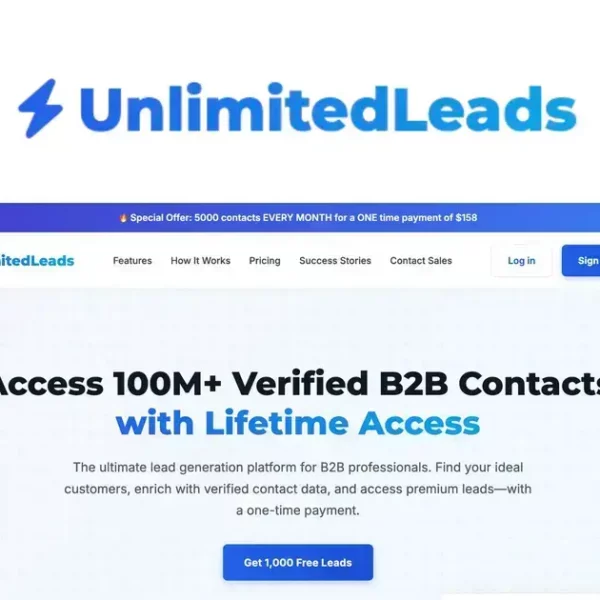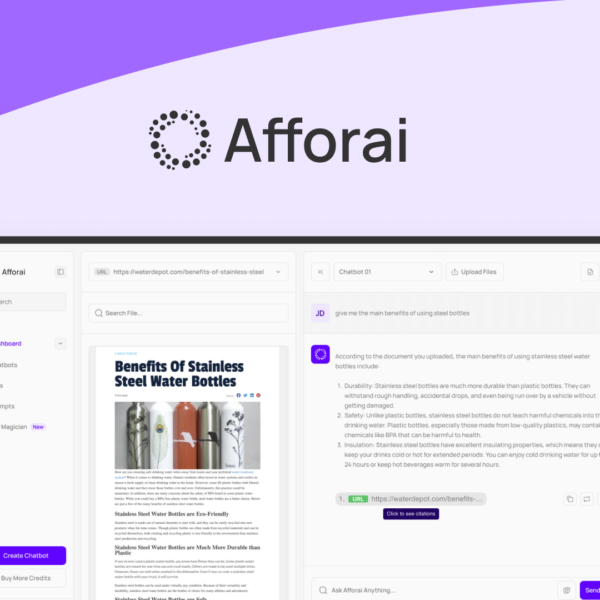Pricing programs are essential tools that help businesses determine optimal pricing strategies based on costs, competition, and customer demand. Effective implementation can enhance profitability, improve market understanding, and ensure pricing consistency, ultimately leading to greater customer satisfaction.
Pricing programs are essential tools that businesses use to determine the optimal prices for their products and services. These programs help companies assess market conditions, analyze competitor pricing, and ultimately enhance profitability. In this blog post, we will delve into different types of pricing programs, discuss their numerous benefits, and provide tips on how to choose the right one for your business needs.
Understanding Pricing Programs
Understanding pricing programs is vital for businesses looking to optimize their pricing strategies and improve profitability. These programs are systematic approaches to determine how products and services will be priced based on various factors like costs, competition, and customer demand.
Pricing programs help businesses assess their market position by analyzing competitor pricing and consumer behavior. Through this analysis, companies can set prices that maximize both sales and profit margins. By leveraging data analytics, businesses can fine-tune their pricing strategies to respond to market changes effectively.
Key Components of Pricing Programs
Several key components are essential in developing an effective pricing program. First, businesses must clearly understand their costs, including production, distribution, and marketing expenses. This cost analysis forms the foundation for setting pricing.
Secondly, market research is crucial. Understanding customer willingness to pay and competitor pricing structures can provide valuable insights. A well-rounded pricing program will also consider psychological pricing strategies, where prices are set based on consumer perception, such as pricing something at $9.99 instead of $10.
Analyzing the Impact of Pricing Programs
Once a pricing program is in place, continuous analysis is necessary to assess its impact on overall business performance. Metrics such as sales volume, profit margins, and customer feedback should be monitored regularly. Adjusting the pricing program based on this analysis helps ensure it remains effective in a changing market.
In conclusion, grasping the fundamentals of pricing programs allows businesses to make informed pricing decisions. With the right approach, these programs can significantly enhance revenue and ensure competitiveness in the market.
Types of Pricing Programs

There are several types of pricing programs that businesses can implement, each designed to meet specific market needs and objectives. Understanding these types is crucial for selecting the right pricing strategy for your products or services.
Cost-Plus Pricing
Cost-plus pricing is one of the simplest types of pricing programs. This method involves calculating the total cost of producing a product or service and then adding a markup for profit. This ensures that all costs are covered while generating a predetermined profit margin. Cost-plus pricing is commonly used in retail and manufacturing sectors.
Value-Based Pricing
Value-based pricing focuses on the perceived value of a product or service to the customer instead of the actual cost. This strategy considers how much customers are willing to pay based on the benefits they receive. It’s often used for premium products or services that offer unique benefits.
Dynamic Pricing
Dynamic pricing is a flexible pricing strategy where prices are adjusted in real-time based on demand, competition, and market trends. This approach is often used in industries like travel and hospitality, where bookings can fluctuate frequently. Companies can maximize revenue by raising prices during high demand and lowering them during off-peak times.
Penetration Pricing
Penetration pricing is a strategy used by companies entering a new market. This involves setting a low initial price for a product to attract customers and gain market share quickly. Once the product is established, prices may be increased. This strategy can be highly effective in competitive markets.
Skimming Pricing
Skimming pricing is the opposite of penetration pricing. Here, a company sets a high initial price for a new or innovative product and gradually lowers it over time. This strategy allows businesses to maximize profits from early adopters who are willing to pay more before targeting a broader audience at lower prices.
Benefits of Implementing Pricing Programs
Implementing pricing programs can offer numerous advantages to businesses, enabling them to optimize their pricing strategies and enhance profitability. Here are some key benefits of adopting pricing programs.
Improved Profitability
One of the primary benefits of implementing pricing programs is improved profitability. By strategically setting prices based on data and market analysis, businesses can maximize their profit margins on each sale. This can lead to increased revenue without necessarily increasing sales volume.
Enhanced Market Understanding
Pricing programs provide deep insights into market dynamics. By analyzing competitor prices and customer behavior, businesses can better understand their market position. This knowledge allows them to adapt their pricing strategies to remain competitive and meet consumer demand effectively.
Consistency in Pricing
With a systematic pricing program, companies can ensure consistency across different products and services. Consistent pricing helps establish brand trust and ensures that customers feel they are getting fair and equitable treatment. This can be particularly important in maintaining long-term customer relationships.
Data-Driven Decision Making
Implementing pricing programs relies heavily on data analytics. Businesses can make informed decisions based on factual data rather than gut feelings. This data-driven approach minimizes risks involved in pricing decisions and helps companies adapt to market changes swiftly.
Flexibility and Adaptability
Pricing programs can be designed to be flexible, allowing businesses to respond quickly to changes in the market environment. Whether there is a shift in consumer behavior, a change in supply costs, or new competition entering the market, a well-structured pricing program enables swift adjustments to maintain competitiveness.
How to Choose the Right Pricing Program

Choosing the right pricing program can greatly impact your business’s success. Here are some key steps and considerations to help you make an informed decision.
Assess Your Business Needs
Start by conducting a thorough assessment of your business needs. Understand the specific challenges you face and the goals you aim to achieve. Are you looking to enter a new market, maximize profits, or remain competitive? Recognizing your priorities will guide you toward the most suitable pricing program.
Analyze Your Costs
Calculate and analyze all associated costs of your products and services. This includes production costs, labor, overhead, and distribution. A solid grasp of your costs will ensure that the pricing program you select allows for profitable operations while remaining attractive to customers.
Research Market Conditions
Market conditions play a significant role in determining the right pricing program. Research your competitors to understand their pricing strategies and market positioning. Analyze customer behavior and preferences to ensure your pricing aligns with what they value. Tools like surveys and focus groups can provide valuable insights.
Consider Pricing Strategies
Familiarize yourself with different pricing strategies, such as cost-plus, value-based, and dynamic pricing. Determine which strategy aligns with your business model and objectives. The flexibility of a strategy might also be important, especially in rapidly changing markets.
Test and Evaluate
After selecting a pricing program, implement it on a small scale and monitor its effectiveness. Collect data on sales, customer feedback, and competitive responses. Use this information to evaluate whether the program meets your expectations and make adjustments as necessary. Continuous testing and evaluation can lead to better results over time.
Tips for Successful Pricing Program Implementation
Implementing a pricing program successfully requires careful planning and execution. Here are some key tips to ensure that your pricing program meets its intended goals.
Engage Stakeholders Early
Involve key stakeholders from different departments, including marketing, sales, and finance, during the planning stages of the pricing program. Their insights can help shape a comprehensive strategy that addresses various aspects of your business and prevents potential conflicts.
Set Clear Objectives
Establish clear and measurable objectives for your pricing program. Determine what you aim to achieve, such as increased sales, improved profit margins, or enhanced customer loyalty. Clear goals will guide decision-making and allow for performance tracking throughout the implementation process.
Utilize Data Analytics
Leverage data analytics to inform your pricing strategies. Gather and analyze data on customer behavior, competitor pricing, and market trends. Using this data will enable you to make informed decisions and adjust your pricing program as needed to stay competitive.
Train Your Team
Provide thorough training for your team on the new pricing program. Ensure that all employees understand the program’s goals, strategies, and tools. Proper training will empower them to implement the program effectively and address any questions that may arise during execution.
Monitor and Adjust Regularly
After launching your pricing program, continuously monitor its performance. Collect feedback from customers and team members, and track key performance indicators. Be prepared to make adjustments when necessary to ensure the pricing program remains effective and relevant in changing market conditions.
In Summary: The Power of Effective Pricing Programs
Implementing a pricing program can significantly impact your business’s success. By understanding the types of pricing programs, assessing your needs, and choosing the right strategy, you can enhance profitability and customer satisfaction.
Benefits such as improved market understanding and consistency in pricing help your business stand out. Along the way, engaging stakeholders, utilizing data analytics, and providing team training are key to a successful implementation.
With careful planning and regular adjustments, your pricing program can adapt to the changing business landscape, ensuring long-term success and growth. Don’t underestimate the potential of an effective pricing program to elevate your business and meet your objectives.
FAQ – Frequently Asked Questions About Pricing Programs
What is a pricing program?
A pricing program is a structured strategy that helps businesses determine how to price their products or services based on various factors like costs, competition, and customer demand.
How can a pricing program benefit my business?
A pricing program can enhance profitability, improve market understanding, and ensure consistency in pricing, leading to better customer satisfaction.
What types of pricing programs are available?
Common types include cost-plus pricing, value-based pricing, dynamic pricing, penetration pricing, and skimming pricing.
Why is data analysis important for pricing programs?
Data analysis allows businesses to make informed pricing decisions by understanding market trends, customer behaviors, and competitor actions.
How do I know which pricing strategy to choose?
Start by assessing your business needs, analyzing costs, and researching market conditions to align a pricing strategy with your goals.
What are some tips for successfully implementing a pricing program?
Engage stakeholders, set clear objectives, train your team, and continuously monitor and adjust the program based on performance.




